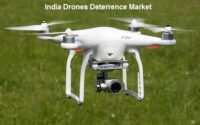Key Trends in ICT Sector that will Shape 2022
The acceleration of the adoption of digital technologies in the last two years has been phenomenal. Technologies like automation, artificial intelligence, predictive analytics, and the internet of things (IoT) are enriching our everyday lives and driving change in every sector. As the digitization and virtualization of business and society continues, more and more brands are looking for ways to expand in information technology arena because of the immersive amount of potential it holds.
Here are the key trends in Information Technology that will dominate in 2022.
Metaverse will Shine
Also known as the ‘future of the internet’, Metaverse is thriving and rapidly expanding. Metaverse is a virtual reality that enables people across the globe to interact with each other and metaverse itself, opening the door to stronger and more realistic experiences than simply browsing the web. Since metaverse is continuously developing, technology will likely grow omnipresent with multiple cross-chain possibilities. Metaverse will be the next frontier for online interaction, which would completely revolutionize the way communication professionals market their products. Video games, cryptocurrencies, virtual and augmented reality are becoming metaverse adjacent as the virtual worlds are gaining momentum.
From big luxury brands like Gucci, Balenciaga, Sotheby’s to mass-market players like Coke, Wendy’s, Chipotle, everyone is rushing to use metaverse to their best advantage. Facebook’s Horizon Workrooms is an avatar-based collaborative workspace platform that facilitates virtual reality experiences for people who want to work together. Apple is rumoured to be working on VR headsets and AR glasses, which signifies the company’s interest in metaverse. Nike is planning to collaborate with metaverse platform, Roblox, to create a virtual world called Nikeland, where players can compete in dozens of virtual games and buy at a virtual platform nested in the platform. With heavy investments and interest from leaders, metaverse will become the next big thing.
Artificial Intelligence of Things (AIoT) will Gain Momentum
According to some statistics, around 73% of all data collected within the enterprises goes unused. Hence, two superpowers of innovation, artificial intelligence (AI) and internet of things (IoT) are being integrated to create value from huge chunks of data volume. The exponential increase of connected devices and the rise of Industry 4.0 are the main driving force behind the integration of AIoT, enabling digital leaders to fully focus on their core competencies, reduce maintenance cost, and enhance user experience. Many technology companies are increasingly leveraging AI capabilities on their major general-purpose and industrial IoT platforms. Key segments benefiting from AIoT include agriculture, robotics, industrial automation, autonomous vehicles, building automation, smart cities, transportation and logistics, retail management, and healthcare.
Tesla’s autonomous cars with autopilot features represent the perfect real-world application of AIoT. The cars gather data from various sources and then utilize it to determine the required actions. A smart cloud platform for cities developed by Alibaba Group, ET City uses AIoT technologies and solutions to monitor traffic, reduce the prevalence of accidents, and make cities smarter and safer. As the devices become smarter and more powerful, the fusion of artificial intelligence and IoT will become mainstream.
Enhanced Cybersecurity Practices
A surge in digital connectivity and rising automation for almost all processes in the business world have led to a spike in cybercrime activities. As the innovations continue to emerge, cybersecurity threats will grow. The cybersecurity efforts are moving beyond defense solutions and evolving into proactive strategies to address pressing protection issues. Artificial intelligence and machine learning are continuously driving the growth of new cybersecurity technologies, making them more autonomous and organic to recognize and respond to new threats.
The emergence of new hybrid cloud environments is empowering organizations to automatically predict, detect, avoid, and respond to threats. As a new approach to cyber defense, many companies are switching their applications to SaaS solutions and adapting new cloud environments. Governments have started to get on top of the situation by catching up with risk. In 2022, penalties related to data breach and loss could expand, legal obligations of the companies for data thefts could grow, and the jurisdictions passing laws relating to making payments in response to ransomware attacks are likely to increase. Besides, education and awareness could play a fundamental role in fully understanding the vulnerabilities of cyber-attacks.
According to TechSci Research report on “Global Cybersecurity Market By Segment (Security Services, Network Security, Infrastructure Protection, Identity Access Management, Data Security, Application Security, Integrated Risk Management, Cloud Security and Others), By Deployment Mode (On-Premise and Cloud), By Organization Size (Large Enterprises and SMEs), By End Use Industry (BFSI, Manufacturing, Government, IT & Telecom, Retail, Energy & Power and Others), By Region, Competition, Forecast & Opportunities, 2025”, the global cybersecurity market is anticipated to reach USD152 billion by 2025. The growth can be attributed to factors such as increasing threats of cyber attacks and data breaches and increasing use of advanced technologies such as AI, IoT, machine learning, among others.
Autonomous Systems will Continue to Advance
Autonomous systems have become a practical reality and continue to rise. Emerging autonomous systems are capable of adapting to changing conditions, knowledge, constraints in an environment where human control is not physically possible. Several technologies such as the Internet of Things, high-speed communication networks, artificial intelligence, and machine learning are coming together to extend the scope of operations of autonomous systems. Autonomous systems will continue to fuel new research, development, and business opportunities in the coming years.
Some of the real applications of autonomous systems include autonomous aircrafts, autonomous inventory management, and delivery robots, personal and service robots, autonomous vehicles, etc. The advanced automation systems will become more prevalent in the future with the addition of sensors and feedback loops. Fully autonomous systems will emerge in some niche areas, including mining activities, food delivery, etc. As car manufacturers are performing tests with autonomous vehicle solutions, the autonomy level in self-driving vehicles will gradually increase.
Greater Emphasis on 5G
As the implementation of fifth-generation wireless connectivity is expanding worldwide, high data speed and data density will drastically change IoT devices operated and used across various industries. 5G is faster than any wired Wi-Fi networks that enable connected devices to function anywhere. With the new wireless technology, businesses will have access to anything they need, AI will thrive from anywhere, autonomous cars and drones will become public, factories will become smarter, and what not. Given the significant role IoT plays in the industrial sector, the growth of 5G technologies will increase greater efficiencies, greater transparency, and even higher quality for customers.
5G is going to drive the smart city application harnessing the newly captured data to enhance city operations. As the need for security becomes more critical, carriers such as AT&T, Verizon, and T-Mobile have been bolstering 5G networks with added encryption and additional defenses to provide an additional layer of security to the new devices and connections connected to the network. Integrating 5G with edge computing, organizations enable more data collection and faster processing than ever before, which will result in expanding opportunities for solution providers.
According to TechSci Research report on “Global 5G Infrastructure Market, By Communication Infrastructure (Small Cell, Macro Cell, Radio Access Network (RAN) and Distributed Antenna System (DAS)), By Core Network Technology (Software-Defined Networking (SDN), Network Function Virtualization (NFV), Mobile Edge Computing (MEC) and Fog Computing (FC)), By Application (Healthcare, Automotive, and Others), By Company and By Geography, Forecast & Opportunities, 2025”, the global 5G infrastructure market is anticipated to grow at a formidable CAGR during the forecast period. The growth can be attributed to factors such as growing demand for high speed and large network coverage and rising adoption of IoT and big data analysis.
Robotics will Become More Prevalent
The global robotics market is projected to grow to USD45.5 billion in 2022 as robots are increasingly becoming an important part of several industries. The automotive industry was one of the early adopters of robotic technology, but their applications are now expanding to other sectors like agriculture, construction, education, food and beverage, healthcare, and logistics. According to some reports, the market for collaborative robots is anticipated to reach a value of USD8 billion by 2030. As automation technologies are maturing and innovation is integrating and standardizing engineering approaches, robotic technology will unlock a new wave of capability and efficiency.
More creativity in robotics will emerge in industrial robotic space with the rise in software-first solutions, cheaper sensing, artificial intelligence, simulation tools, and abundant data. 2022 will be the year when robot delivery will become a reality with drones for making deliveries across towns. Maintenance robots are on the rise as they can perform the most important tasks for any industrial location and provide better predictions to prevent breakdowns. The robotic technology would further expand the demand for 3D sensors, ultrasonic technologies, infrared cameras, and other accessories and equipment required to manufacture industrial robots.
Web 3.0 Becoming More Mainstream
The Web 3.0 revolution has helped in the rise of non-fungible tokens, which are digital collectibles that can be bought and sold with cryptocurrency. While Web 2.0 had been largely driven by the advent of mobile, social, and cloud, its successor is built upon three layers of technological innovations like edge computing, decentralized data networks, and AI. The push for a blockchain-powered future is gradually making Web 3.0 the new norm for social networks, transactions, and business. Web 3.0 is expected to become crucial for businesses involved with finance, insurance, and banking solutions to thrive and build more value. The new technology disintermediates unreliable middlemen and allows users to build applications across thousands of blockchain nodes.
The automotive industry has witnessed extremely positive change ever since the adoption of web 3.0 as car manufacturers are able to easily locate inefficiencies and accelerate production. In the insurance sector, companies will be able to make the claim procedure seamless and efficient with the use of decentralized architectures and smart contacts. The healthcare industry can also use the web 3.0 technology to provide tamper-proof records, enhance patient privacy, and secure medical data. Besides, the new-generation technology bolstered by smarter websites, fast internet connectivity, and powerful mobile device would unlock new potential for businesses to reach their full potential and make headway into new markets.



